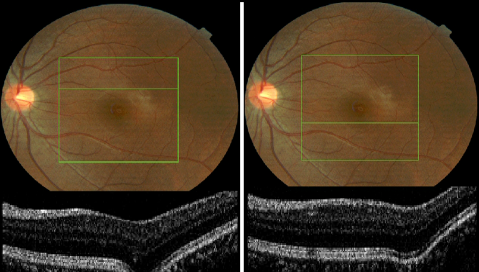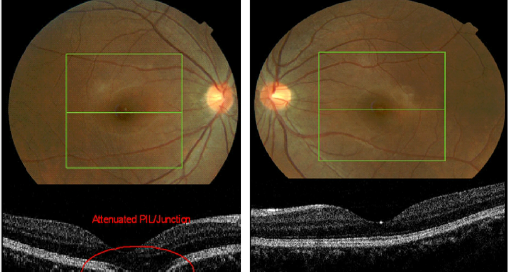Pathological Myopia: Mini to Maxi Bulge – Page 9 of 19
Diagnosis – sub-clinical mini-bulges secondary to myopiaTreatment - Since some authorities believe that IOPs can result in posterior staphyloma in patients with genetic weak elements of the sclera, diurnal IOPs are advisable. Treatment of patients with high IOPs or spikes in IOPs should be considered to prevent loss of the retinal nerve fiber layer (RNFL)





